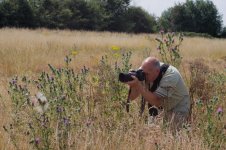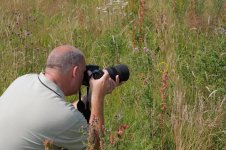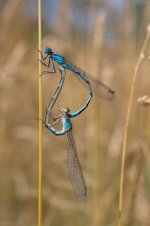Hi,
I am interested in purchasing a lens for macro photography but
I'm not sure which would be best suited.
I am using a Canon 30D with Canon 28-105mm at the moment but the close focus on this lens isn't close enough, I have used a Nikon coolpix 4500 in the past and this was much better with macro focussing down to a few centimetres which was good with plants, Moths etc.
Could anyone guide me as to which ones I should look at.
Thanks in advance.
I am interested in purchasing a lens for macro photography but
I'm not sure which would be best suited.
I am using a Canon 30D with Canon 28-105mm at the moment but the close focus on this lens isn't close enough, I have used a Nikon coolpix 4500 in the past and this was much better with macro focussing down to a few centimetres which was good with plants, Moths etc.
Could anyone guide me as to which ones I should look at.
Thanks in advance.







